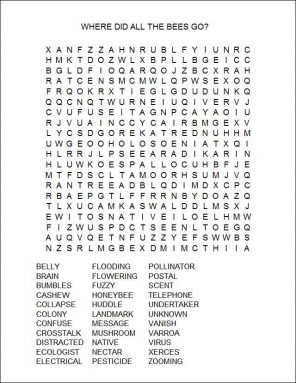Why are bees vanishing?
Scientists find a combination of threats may explain declining honeybee populations
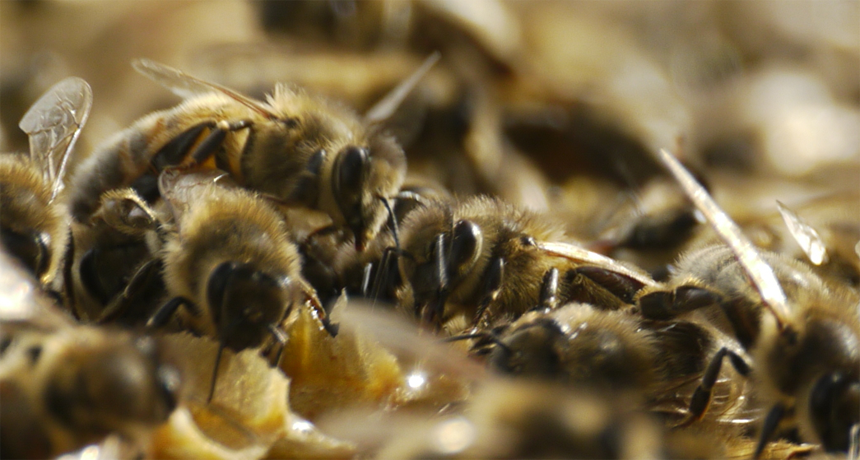
Pesticides, pollution, parasites, infections and other threats continue to threaten colonies of honeybees worldwide. In the United States, up to one-third of commercial honeybee colonies vanish each year. That loss harms farmers, who rely on honeybees to pollinate many important crops.
Courtesy of Christopher Connolly, University of Dundee
The post office is buzzing as package after package of honeybees await delivery to their new homes. The tiny hooked feet of some worker bees cling to the screens on the sides of each wooden case. Other worker bees huddle around a small central cage containing their queen.
Sorting and delivering packages of live honeybees isn’t the favorite task of postal workers. Still, it is a job they have to handle more and more often. That’s because beekeepers in the United States and Europe have been losing bees to a mysterious condition known as colony collapse disorder, or CCD. Each mail-order package contains the seed of a new honeybee colony to replace one that has vanished.
“The bees appear fine in the fall,” says Michael Breed, a honeybee researcher at the University of Colorado at Boulder. “Then by mid-spring they’re simply gone.”
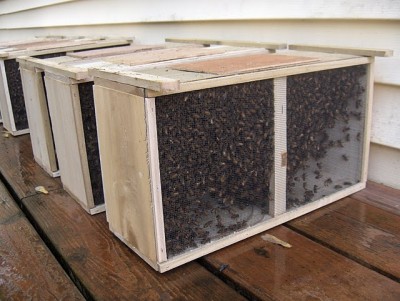
Breed has been working with these insects for 35 years. He has always ordered a few new bee colonies each spring. But since CCD began affecting the bees, he has had to order more and more each year. Before 2005, he never had a colony of bees simply disappear. Lately, it seems to happen all of the time. And when his colonies collapse, so do those maintained by neighboring beekeepers. The Northern Colorado Beekeepers Association now trucks in hundreds of packages of bees each spring to replace those that have vanished. Across the United States, up to one-third of the colonies kept by commercial beekeepers collapse each year, according to government surveys.
Exactly what’s causing CCD remains a mystery. Among the early suspects: parasites that infiltrate the hives, especially the bloodsucking Varroa (Vuh ROW uh) mite. Later, some scientists found evidence that assigned the blame to certain pesticides. Other biologists have linked the problem to infections, including some caused by viruses.
Scientists now suspect all three — parasites, pesticides and infections — combine to deliver a triple whammy. Pesticides first may weaken the bees. That leaves the insects too weak to survive diseases and pests that otherwise would not kill them. Earth’s changing climate worsens things, Breed notes. A changing climate can bring droughts or flooding that affect the availability of flowers on which bees depend. This makes bees more vulnerable than ever.
Even these threats may not capture the whole picture. Worker bees do many jobs in the hive: Nurse bees tend larvae. Forager bees gather food. A small number of guard bees protect the hive entrance from honey thieves. And some bees patrol the hive, scouting for sick and dying bees. These “undertaker” bees cart off the dead, dropping their bodies outside the hive. If the insects were just becoming deathly ill, beekeepers should find the evidence near the hive. The bees wouldn’t just vanish.
But they have been.
Too much ‘noise’
Another explanation for the collapse of so many colonies is that the bees are getting lost. Christopher Connolly thinks they may be forgetting their way home. A neuroscientist at the University of Dundee in Scotland, Connolly studies bee brains.
Connolly is especially interested in how pesticides affect those wee brains. Honeybees can encounter pesticides in different places. People treat hives where bees live with chemicals to kill Varroa mites. Farmers and gardeners treat the crops and flowering plants that bees feed on with chemicals to kill insects and other pests. Even the sugary corn syrup many beekeepers feed their bees over winter can contain traces of the pesticides that farmers had applied to growing corn.
In most cases, bees contact only tiny amounts of these poisons. Normally these exposures would be too small to kill them. Still, even tiny amounts will move throughout a bee’s body. About one-third will reach its brain. And that may be enough to confuse the bee, Connolly says.
The part of the bee brain responsible for learning and memory is called the mushroom body (named for its mushroom-like shape). When cells here receive information — about the location or scent of a flower, for instance — they “talk” to other cells. It’s through these chemical conversations in its brain that a bee learns a flowery scent means nectar is available. Or it may learn that a certain landmark means home is close by. The bee responds by zooming in on its target.
Of course, the brain chatters using not sounds but chemical signals. Chemical messengers shuttle back and forth to relay these signals. Scientists refer to these messenger chemicals as neurotransmitters. They’re the “language” by which one nerve cell in the brain talks to a neighbor. Once a message has been received, an enzyme between the nerve cells gobbles up the neurotransmitter. That way the cells won’t have to “listen” to an old message.
Connolly set out to discover how pesticides affect those conversations between brain cells.
Where the message gets lost
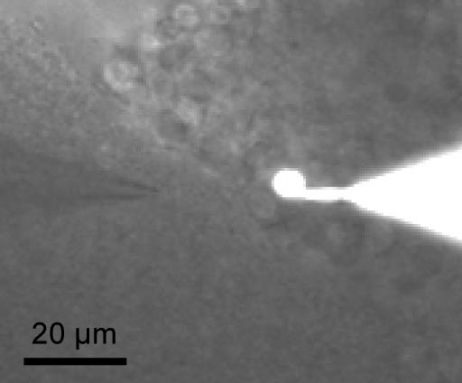
He started the study by selecting three common pesticides: one used to kill Varroa mites, and two known as neonicotinoids (Nee oh NICK uh tin oydz). Farmers and gardeners often use these last two, called neonics for short. One reason: They are less toxic to people than many other pesticides are.
Connolly then removed the brains from honeybees and bumblebees and put those brains in a watery bath. He inserted a tiny, needlelike probe into a cell in the mushroom body of each brain. This probe recorded electrical signals.
Electrical pulses emerge every time a nerve cell receives a message from its neighbor. The cell then prepares to relay that information to the next cell. (It’s a bit like the game of “telephone,” where children pass along a message with a whisper. Only in this case, the nerve cells share their message by releasing a messenger chemical.) Each electrical pulse Connolly detected indicated that the probed cell was chatting with a neighbor.
He then tested each of the three pesticides individually, adding a small amount to a bee brain’s bath.
With the neonics, he exposed each bee’s brain cells to about as much as the insect might encounter while foraging on plants treated with the pesticide. And the tests showed that even very low levels of neonics caused the brain cells to become overly chatty.
It’s as if all the cells in the brain decided to talk at once, Connolly explains. Just as you might miss information directed at you in the midst of a noisy crowd, the bee’s brain cells might miss an important message about the location of food or a landmark.
The pesticide used in beehives to kill mites only made the problem worse. It stopped the enzymes from doing their job. So not only did mushroom-body cells find themselves in the midst of endless crosstalk, but the enzymes did nothing to hush the old messages. That made the bee’s brain even noisier.
Amidst that racket, a bee could miss important information, Connolly thinks. Similar to the way a distracted driver may miss a turn, these bees may miss landmarks pointing the way home. And this, the scientist says, could explain the mysterious disappearance of entire colonies of honeybees. One by one, bees get forever lost. And every lost bee is one more that fails to bring food home to its colony.
Disappearing scent trail
As if pesticides, parasites and infections weren’t enough, honeybees face another serious threat. Experts from the University of Southampton, England, discovered that air pollution from cars and trucks can erase the scent that bees follow to find food. Foraging honeybees locate most flowers by smell. In fact, that’s why flowers smell good — not for our enjoyment, but to help lure pollinators. Each flower’s scent is a complex mix of released chemicals.
Honeybees use the whole mix of odors to find a preferred type of flower. When some share of the chemicals disappear, bees no longer recognize what is left of the starting scent. It’s like trying to recognize the smell of a pepperoni pizza just from its dough. As a result, the trail that bees had been following to locate food vanishes.
Pollution from cars and trucks can partially erase a flower’s scent, Robbie Girling and his team now show. They traced the problem to diesel exhaust. Their new findings appeared Oct. 3 in the journal Scientific Reports. With bees no longer able to recognize a flower’s scent, they may miss food. This can leave a colony hungry, they conclude — even if the nectar foragers do make it home.
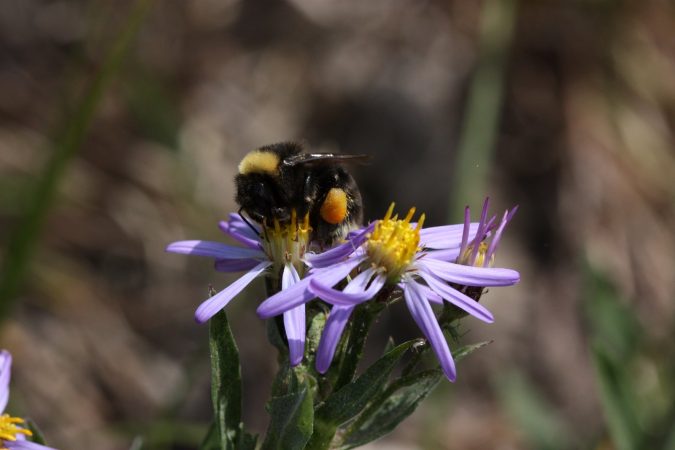
More than just honey
Losing honeybees means more than just a world without honey. These insects play a major role in producing all kinds of foods, including berries, apples, almonds, melons, kiwis, cashews and cucumbers. That’s because honeybees move pollen between flowers. This fertilizes plants. Without this pollination, many plants won’t produce fruit. Bees also pollinate crops used to feed livestock. Fewer bees could therefore mean less of many different foods at the grocery store, including meat and dairy.
Pollination is so important that many farmers rent bees. Once crops start blooming, beekeepers truck in commercial hives to let the bees do their work. In agricultural states such as California, vanishing honeybee colonies may pose a serious threat to crop fertilization and the food supply.
However, research by Rachael Winfree suggests that disappearing honeybees might not hurt all farmers equally. An ecologist, she works at Rutgers University in New Brunswick, N.J. In her state, farmland is often located near habitats that support other, wild pollinators.
Fruit plants visited by a diverse mix of pollinators produce more fruit than those visited by just a few species, Winfree has found. Particularly important are wild bees. These are the natives that beekeepers can’t control. Some wild bees will even pollinate flowers that honeybees can’t. A bumblebee’s vibrating belly, for example, does a better job than honeybees of pollinating cherry tomatoes.
Nor are bees the only pollinators. Some moths, bats and other critters help move pollen as well.
Other bees not safe from pollution
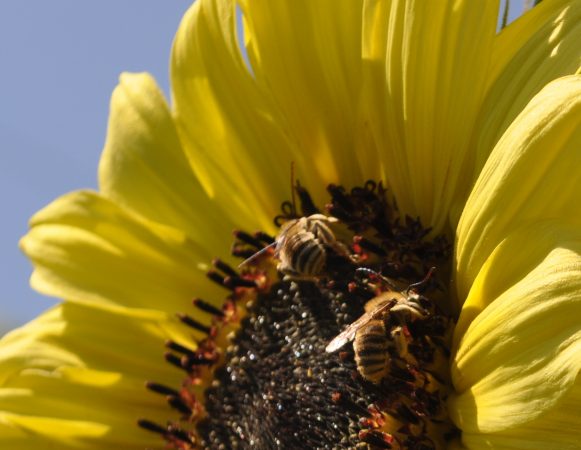
The world is home to more than 20,000 species of bees. North America alone boasts about 4,000. Those species of native bees all pollinate plants. However, none of the world’s seven honeybee species come from North America. Those now found there originally came from Europe: Settlers brought them in the 1600s to guarantee a source of wax and honey.
Of course, native bees face pesticides, diseases and other pressures too. The fate of these wild bees remains largely unknown. Certainly, many native bees encounter widely used pesticides, including neonicotinoids. If bumblebees reflect the risks faced by North America’s other native bees, then “many species might be declining,” Winfree says.
In June, for instance, bumblebees rained out of flowering trees at a parking lot in Wilsonville, Ore. Rich Hatfield investigated. He’s a biologist with the Xerces (ZER sees) Society. His group is dedicated to protecting bees and their relatives. What Hatfield found shocked him. “I walked into a parking lot littered with dead bodies,” he recalls.
The trees had been sprayed with a neonicotinoid pesticide, he learned. Hatfield estimates that more than 50,000 bumblebees died in just this one incident. That’s as many bees as live in about 300 colonies, he says.
Bumblebees are even more susceptible to neonics than honeybees, Connolly has found. That likely explains why only bumblebees died in the Wilsonville incident. Still, all bee brains have mushroom bodies with cells that can be overwhelmed by the noise induced by neonics.
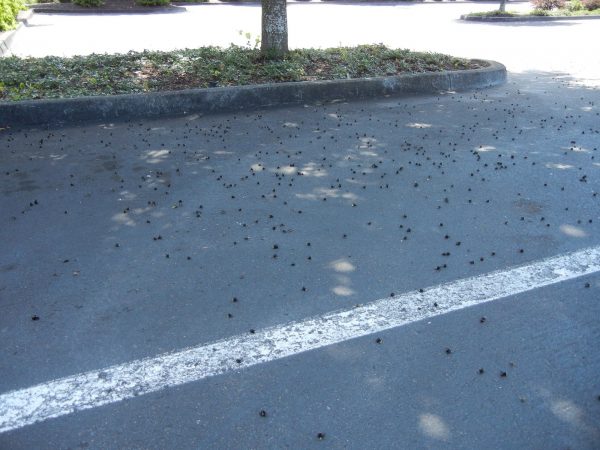
These pesticides represent just a small share of the many types sprayed on crops, flowers and other plants.
Even chemicals not intended for plant use can harm bees if flowering plants are located nearby. In September, for example, several honeybee colonies died in Minneapolis, Minn., after being exposed to the pesticide fipronil. Experts at the University of Minnesota believe the chemical was applied to the foundation of a building. The chemical appears to have tainted nearby plants that had been blooming.
How such chemicals affect bumblebees and other native bees remains unknown, says Connolly. How harmful other chemicals might be to their brains may vary widely, he says.
The vast majority of native bees are solitary. That means they don’t live in colonies. That makes them harder to study. Yet scientists know that even solitary bees need to navigate. They need to remember where the best food is. And females need to find their nests so that they can supply their young with food. Lost or confused native bees may mean fewer and fewer bees over time. That would mean less diversity in the animals available to pollinate crops. And as Winfree’s work suggests, that too might diminish our food supply.
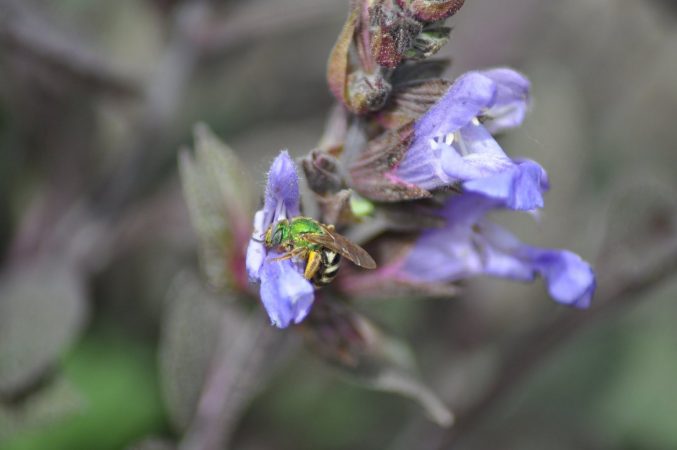
Recommendations
While scientists search for pesticides that are safe for wildlife, people and bees, the rest of us can support bees at home — even in the middle of a city.
All four researchers suggest planting native flowers and leaving untended areas in our yards and gardens. Native bees readily nest in such areas. That helps ensure more pollinators will be around the next year. The experts all recommend avoiding the use of pesticides around our homes. The best way to do this is by using integrated pest management. This approach can be effective and good for the environment. (Click on the explainer box above to learn more.)
Pesticides won’t go away completely. They ensure that pests won’t destroy the crops on which people depend for food. But, “killing bees and other insects is not justified just to have pretty flowers,” Connolly argues. Allowing insects to eat our garden plants can provide them with a lifeline. And that lifeline might also extend to us, if it helps protect the pollinators on which our food supply depends.
Power Words
colony A group of organisms that live close together or share a home (such as a hive or other nest site).
enzyme Molecules made by living things to speed up chemical reactions.
genus (plural genera) A group of closely related species. For example, the genus Canis — which is Latin for “dog” — includes all domestic breeds of dog and their closest wild relatives, including wolves, coyotes, jackals and dingoes.
herbicide A chemical used to kill weeds.
honeybee A stinging, winged insect that collects nectar and pollen, and produces wax and honey. Honeybees live in large groups called colonies. Each colony consists of a queen, who lays all eggs, and her offspring. These consist of male drones, but mostly large cadres of female “worker” bees that attend to the hive and its inhabitants and forage for food.
insecticide A chemical used to kill insects.
mite A small, eight-legged creature related to spiders and ticks. It is not an insect.
mushroom body The part of a bee’s brain involved in learning, memory and navigation.
native (in ecology) An organism that evolved in a particular area and continues to live there.
navigate To find one’s way between two points.
neonicotinoids A class of insecticides usually applied to target pests such as aphids, whiteflies and some beetles. These insecticides, called neonics for short, can also poison bees.
neuroscience Science that deals with the structure or function of the brain and other parts of the nervous system. Researchers in this field are known as neuroscientists.
neurotransmitter A chemical substance that is released at the end of a nerve fiber. It transfers an impulse or signal to another nerve, muscle cell or some other structure.
ornamental plants Shrubs and other plants, including many prized for their blooms or showy leaves and berries.
pesticide A chemical or mix of compounds used to kill insects, rodents or other organisms harmful to cultivated plants, pet or livestock, or that infest homes, offices, farm buildings and other protected structures.
pollinate To transport male reproductive cells — pollen — to female parts of a flower. This allows fertilization, the first step in plant reproduction.
pollinator An animal that transfers pollen from one flower to another, allowing the plant to grow fruit and seeds.
solitary Living alone.
Word find (click here to enlarge for printing)
